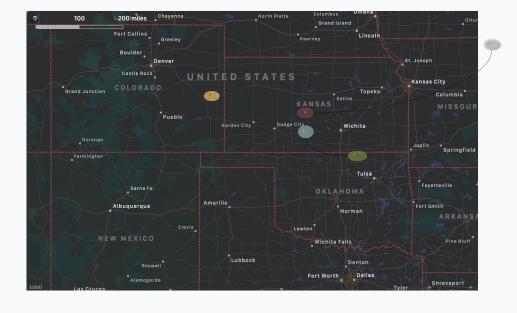
New to v8.0.4, geographic adornments are a new, highly-experimental feature. As such they are not fully supported. Treat them as experimental and report issues directly to Eastgate rather than the forums.
A map adornment becomes a geographic adornment if all of the following are true:
- $Latitude is non-zero
- $Longitude is non-zero
- $Range is sufficiently large
The latitude and longitude may be set directly, or may be computed indirectly because $Address has been set. The scale of the map is determined by the adornment’s $Range attribute, which represents the approximate size of the map in kilometres.
If a note that sits atop a geographic adornment has a latitude and longitude that lies within the adornment, it is moved so the note’s centre lies on the corresponding place in the map. If the position is not on the map, the note is moved to the edge of the adornment. If a geographic adornment moves a note to a position that is already occupied, it will try to find a nearby place that is not occupied.
Geographic adornments can only draw maps up to about 8,000 pixels in size, which should be ample for most purposes.
